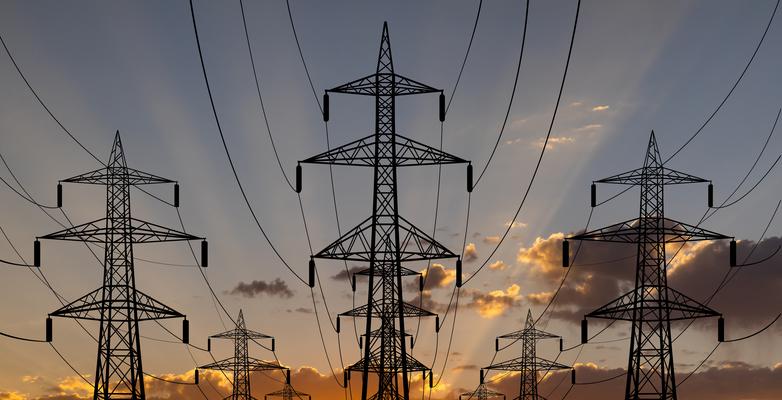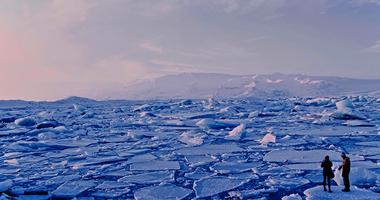
Blackouts and the Climate Crisis
5 min read
We have a big problem.
Our burning of fossil fuels is driving a major crisis. It’s creating ever-more-severe tropical storms. Causing worse and worse wildfires and record-setting heat waves. Raising sea levels. Bringing agriculture-killing droughts. And so much more.
It’s the climate crisis – and it may also leave you in the dark.
Climate change is turning up the heat on our power grids, making blackouts more likely in a few key ways.
Spiking Demand and Strained Supply
Imagine the power grid as a highway for electricity. Rising temperatures throw a double whammy at this expressway.
First, heat waves cause a surge in demand. As temperatures soar, people, understandably, crank up their air conditioners. With everyone blasting their AC – alongside ongoing, growing demand from data centers and other tech-sector users – this overload in demand can overwhelm the grid, especially if it wasn't designed for such high needs.
Second, extreme heat actually weakens the highway itself. Power lines can't carry as much electricity safely in scorching temperatures and transmission systems, including power lines, become more vulnerable to damage, further straining the system.
It's like reducing highway lanes during peak traffic – a recipe for gridlock… and blackouts.
These factors combine to push the grid beyond its limits, leading to outages that can leave entire regions in the dark.
Heat itself can also hinder power plants.
Thermal plants like coal, natural gas, and nuclear burn fuel to produce electricity. Burning this fuel generates heat. When outside temperatures push the temperatures in the power plants to new limits, plants must reduce output or even shut down to keep cool, while also consuming more water resources to reduce temperatures.
Hydropower is also vulnerable, as the ancient technology relies on water flow, which can be reduced by droughts linked to climate change. In fact, recent shortfalls of hydropower generation have, in part, led to increases in emissions as dirtier fuels like coal and gas were tapped to fulfill demand.
Extreme Weather's Wrath
Climate change is amping up extreme weather events, causing more and more weather-related outages.
High winds and heavy rain can be destructive. They topple power lines, damage transformers, and knock out substations, leaving entire areas powerless.
It’s pretty easy to imagine a fallen tree taking out a power line – that's a blackout waiting to happen.
And floods can literally drown power plants and substations, cutting off the electricity supply. A submerged power plant is out of commission until repairs are made. That’s why we’re seeing fossil fuel companies building massive sea walls to protect their facilities and extend their dirty reign over our energy system, ignoring the effects their efforts have had on the very climate-exacerbated events threatening their investments.
Wildfires too, also influenced by climate change, can endanger power lines and force preventative blackouts, which presents its own set of dangers to vulnerable groups, to avoid sparking new fires.
Extreme weather can also disrupt fuel deliveries to power plants, especially during and after storms hit – another reason we need to move toward more-reliable clean energies (more on that below). If the power plant can't get the fuel it needs to run, there's simply no electricity to be generated.
We saw this exact issue during Winter Storm Elliott, which knocked out power for millions in the eastern US in December 2022.
An analysis from one of the grid operators in the region, PJM, found that a whopping 86% of the forced outages were caused by fossil fuel plants. Meanwhile, the Midcontinent Independent System Operator (MISO) found that wind energy held strong during the storm, covering for some of the gas and coal facilities hit with fuel supply issues and equipment failures.
The grid is a complex system, and a problem in one spot can quickly snowball into a widespread blackout. Damage in one part of the grid can trigger outages in other areas, like a domino effect.
Critically, these blackouts do not affect everyone equally. Often, communities of color are hit hardest, as we saw from Winter Storm Uri in Texas in 2021, in Puerto Rico after Hurricane Maria, and in Florida following the devastation of Hurricane Irma.
Infrastructure Under Stress
Many power grids aren’t prepared for rising demand and more extreme weather, making them even more vulnerable to the stresses placed on them by a changing climate.
Worryingly, as increasingly frequent extreme weather pushes grid operators to fully ramp up energy resources, as PJM did ahead of a heat wave earlier this summer, they may have to delay preventative maintenance or turn on out-of-service infrastructure.
As these events happen more and more often, we may expect compounding issues with our transmission system as the already-overloaded and aging grid’s vulnerabilities build up.
Put simply: climate change doesn’t always cause blackouts directly, per se, but it's making the conditions that can lead to blackouts more likely and more frequent.
What's Being Done?
There's a growing focus on making the grid more resilient. This includes upgrading infrastructure and investing in clean energy sources, which are, importantly, less vulnerable to some climate impacts.
We also need to develop smarter grids that can better manage fluctuations in demand.
For one thing, we need to roughly double our transmission capacity in order to reach our goal to decarbonize electricity generation by 2035.
Clean energy is often generated far from centers of high demand, such as cities, so thousands of miles of long-distance, high-voltage transmission lines that span multiple grid regions must be built to connect these areas.
We also need to double down on upgrading our existing grid infrastructure. This includes replacing old lines with more advanced cables that can carry up to twice as much current, roughly doubling capacity in many parts of the country. Employing “grid-enhancing technologies” such as smart sensors and advanced controls would enable us to more effectively and efficiently utilize existing infrastructure, which could increase grid capacity by up to 30% at a significantly lower cost.
We must also establish microgrids – a system of interconnected energy consumers and producers that can connect or disconnect from the grid when needed.
Crucially, microgrids have their own distributed energy resources (such as wind turbines or solar panels) to provide power when disconnected from the grid, significantly boosting reliability and resilience to communities and critical community resources such as hospitals, emergency services, and schools.
The Department of Energy, in collaboration with private investors, is leveraging more than $8 billion into grid-enhancing projects like this.
These efforts take time and money, but they're crucial to keeping the lights on in a changing climate.
And as we upgrade the grid to meet the challenges from the changing climate, it’s imperative that we prioritize those most vulnerable to blackouts, such as the frontline communities impacted by the blackouts from Winter Storm Uri and Hurricanes Maria and Irma.
What You Can Do
It’s clear: We need to put our money where our mouth is if we want to prevent future blackouts from happening – and that starts with ending the era of fossil fuels once and for all.
So why are they still using taxpayer funds to subsidize wealthy oil, gas, and coal companies?
It’s time to end the trillions in direct subsidies to the fossil fuel industry destroying our climate.
Think of all the better ways that money could be used – whether it’s upgrading our grid or improving our infrastructure to withstand greater climate impacts.
That’s why we’re calling on G20 countries to end all subsidies for fossil fuel companies now.
Because it's time to stop funding climate devastation – and to start building a clean energy future for all of us.




